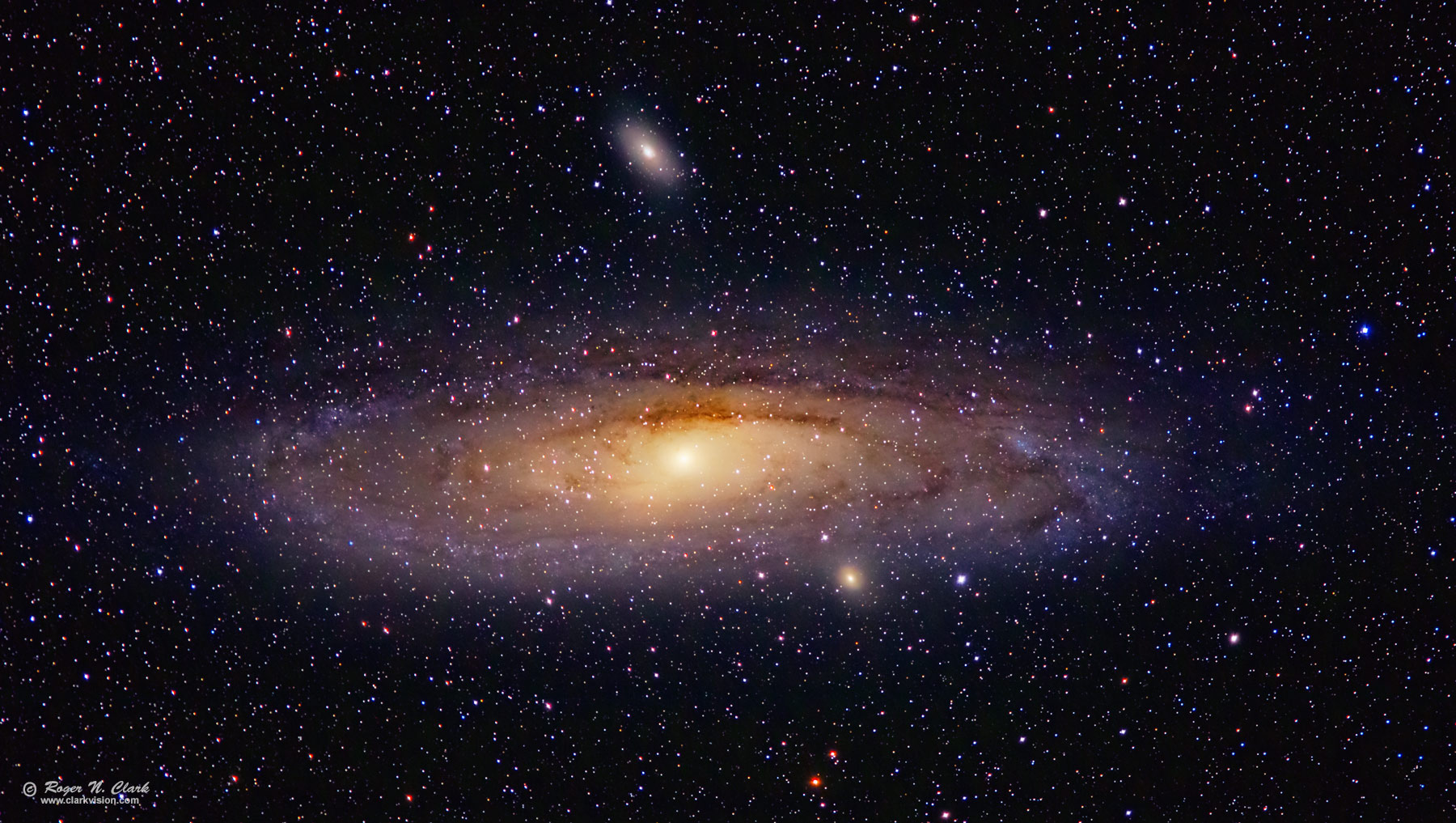| Home | Galleries | Articles | Reviews | Best Gear | New | About | Contact | Gallery Index | Previous |
Next |

| Home | Galleries | Articles | Reviews | Best Gear | New | About | Contact | Gallery Index | Previous |
Next |

The Andromeda Galaxy, M31, is a spectacular large galaxy and close to the Milky Way. This image shows the dust in the spiral arms, and the different populations of stars in the core of the galaxy (population I, yellower stars) and in the outer spiral arms (bluer stars, population II). The long angular length of the galaxy shown here is about 6 times the angular diameter of the full Moon.
Technical. This image was obtained with a Canon 7D Mark II 20-megapixel digital camera and 300 mm f/2.8 L IS II lens plus a 1.4x teleconverter giving 420 mm at f/4 and ISO 1600. No dark frame subtraction, no flat fields. Tracking with an Astrotrac and no guiding. The 36 minutes total exposure (36 1-minute exposures).
Post processing: stretched with rnc-color-stretch. Also see Astrophotography Image Processing Basic Work Flow.
This is a natural color image. The high dynamic range of astrophotos must be stretched to bring out the range of details the camera recorded. But the typical image stretch process loses color for brighter subjects (e.g. stars and the brighter parts of the galaxy become whiter as they are made brighter). This image uses a new algorithm that does not lose color during the stretch.
The Exposure Factors, CEF, CEFA are measures of the relative amounts of light received from a subject. It can be used to fairly compare wildly different lens/telescope apertures and exposure times. For this image:
Modern DSLRs like the 7D Mark II include on sensor dark current suppression and low fixed pattern noise at ISOs around 1600 and higher, making no need for dark frame subtraction. Modern raw converters correct for light fall-off and also correct for hot/dead/stuck pixels. This makes processing low light images easy: simply align and average.
To learn how to obtain stunning images like this, please visit my Extensive Articles on Photography .
See my review of the Canon 7D Mark II and why it is so good for astrophotography: Canon 7D Mark II sensor analysis.
Keywords to this image = astrophoto-1 galaxy Messier night low-light digital_astro canon_7d2 rnc-color-stretch
Image ID: m31.c08.13.2015.0J6A5351-86-36frames-rs6-v0.91.e-c1-1800.jpg
| Home | Galleries | Articles | Reviews | Best Gear | Science | New | About | Contact |
Last updated October 06, 2021